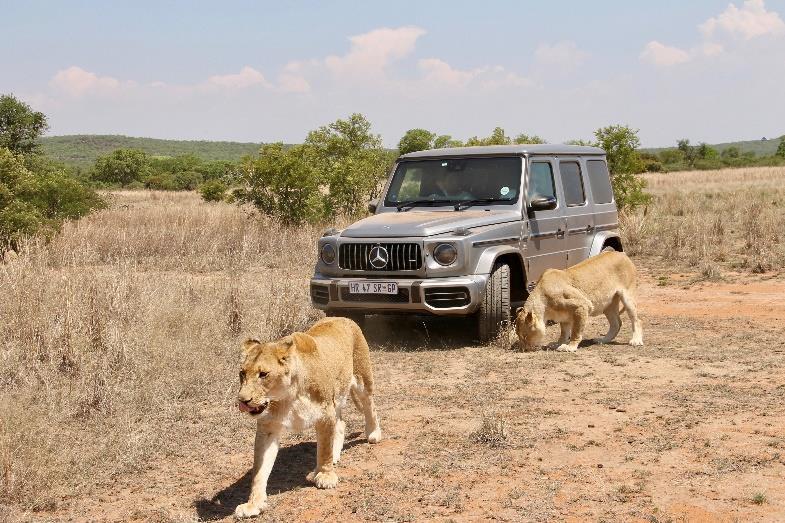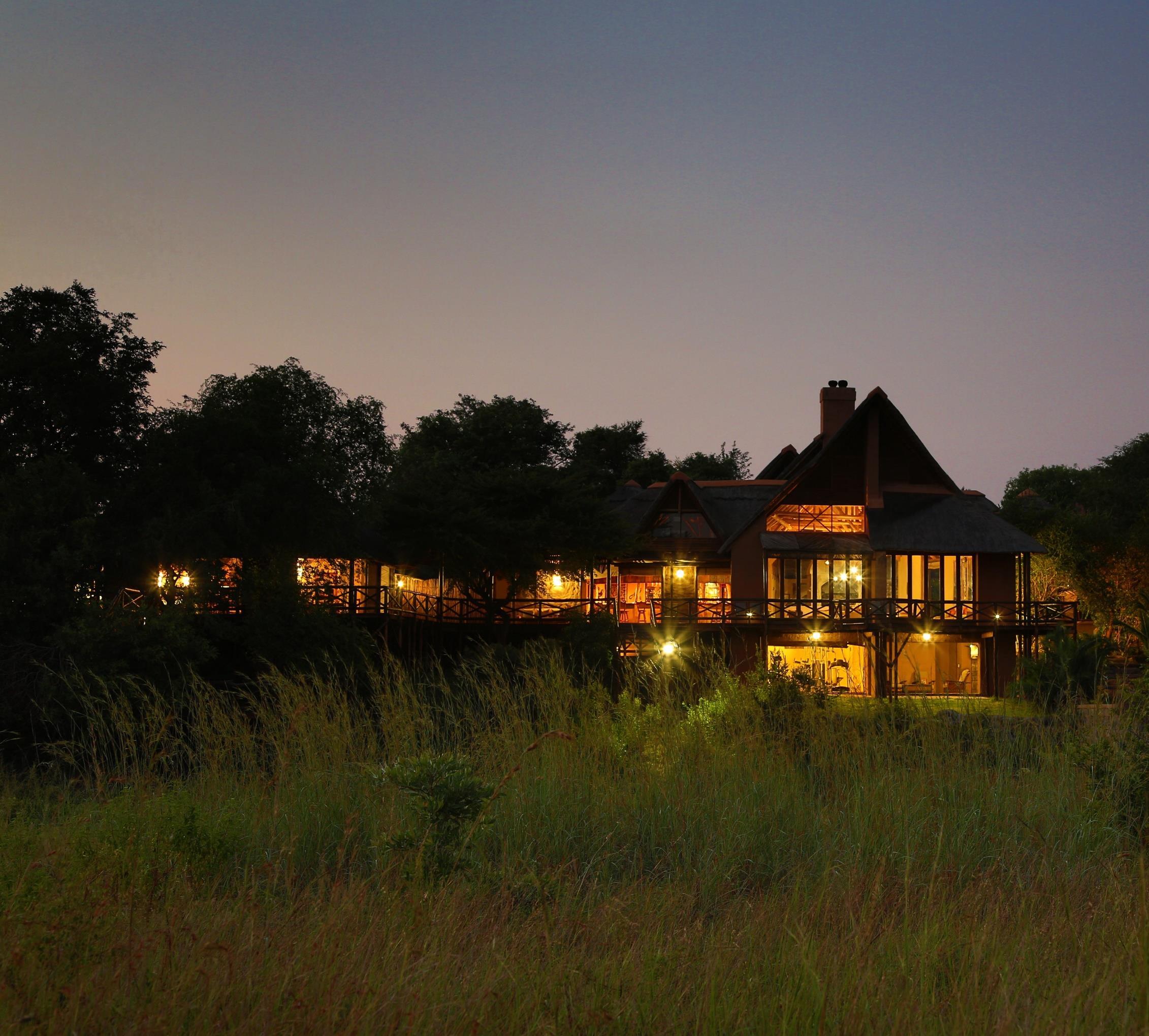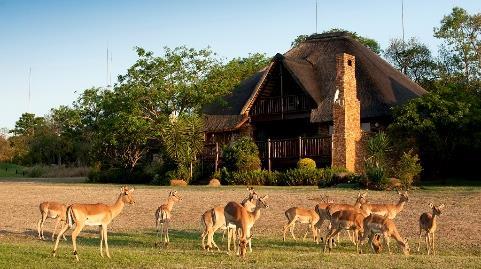
4 minute read
THE LION WHISPERER Meet Kevin Richardson
The Kevin Richardson Wildlife Sanctuary
evin Richardson’s unique relationship with some of Africa’s apex predators have opened many doors and captivated the imagination of many people throughout the world.
Advertisement
He has presented and produced several documentaries that detail his relationships with the animals and highlight the plight of lions both in captivity and in the wild.
The Kevin Richardson Wildlife Sanctuary transforms the way humans think, interact and behave toward the keeping of large carnivores.
The sanctuary’s ultimate goal is to minimize the number of large carnivores being kept in captivity and to highlight the direct link between the cub petting industry and the ‘canned’ hunting industry, by educating the unsuspecting public to the horrors associated with this unscrupulous practice.
Ultimately, they would like to see both practices outlawed. The sanctuary aims to maximize efforts towards keeping carnivores in their natural habitats and is currently home not only to lion, but spotted hyena, striped hyena and black leopard.
The lion population occupies less than 20% of its former range in Africa. Numbers are estimated between 15,000 and 30,000 depending on who is asked. More recently scientists have started to settle on a number of 20,000, however more research is needed into the actual numbers. If allowed to carry on declining at the current rate, there will be no lions left in the wildlife in as little as 20 years.
Kevin’s vision is to raise awareness about the plight of lions and other carnivores in the wildlife and help prevent their habitat loss via human encroachment and conflict (revenge killing), unscrupulous hunting and illegal trade.
The sanctuary’s efforts are buttressed by its many collaborative efforts with other like-minded international organizations that provide care, support, academic and scientific research and other such programs that support the shared values of the sanctuary.
The sanctuary provides the animals in its care the ability to live out full lives, in an open and natural environment, by providing cutting edge enrichment programs and health care.
Education of both adults and children are at the bedrock of how the sanctuary aims to accomplish its goals via documentaries, films, social media and tourism. K



outh Africa's Garden Route region is a world class tourist destination, and together with the Little Karoo it offers a diverse range of exciting and unique experiences, where visitors from abroad and locals are sure to find the perfect balance for a magical holiday.
Straddling the beautiful stretches of coastlines of the Western and Eastern Cape provinces of South Africa, the 200km long stretch of Garden Route derives its name from the stunning natural beauty and unique, ecologically diverse vegetation that typify the region, including grasslands, wetlands, forests and mountainous regions, and the numerous lagoons, lakes and rivers that dot the coastline.
Under the abundant blue skies rolling white sandy beaches beckon. Soak in the dramatic mountain scenery, indigenous fynbos, and animal attractions of the area on foot or bike, by vehicle or from the air. The Garden Route spans South Africa's Western Cape coastal belt from Heidelberg in the Western Cape to the Storms River in the Eastern Cape and provides a stirring study in contrasts. There are more than 21 towns along the Garden Route, offering an endless list of attractions for single travellers, families, couples and tour groups. S
Knysna
The charming town of Knysna offers accommodation in a veritable paradise of lush indigenous forests, tranquil lakes, and golden beaches, showcasing the natural loveliness of South Africa. Nestling on the banks of a breathtakingly pretty lagoon, Knysna is now a protected marine reserve that is home to the extraordinary Knysna seahorse and over 200 species of fish.
Beaches, lakes, mountains and rivers provide endless opportunity for leisure and outdoor adventure. Within the town, craft shops, fleamarkets and cosy cafés beckon with small-town charm and hospitality. The area around Knysna is a veritable Garden of Eden. This is home of the only forest elephant in South Africa, the rare Pansy Shell, the brilliantly coloured, and elusive, Knysna Loerie, a plethora of waterfowl and forest birds, dolphins and visiting whales.
The forests in Knysna constitute the largest complex of closedcanopy forest in southern Africa, whilst the remarkable richness of the Fynbos vegetation contributes over 8,000 plant species to the Cape floral kingdom. Exploring the Knysna forests, along demarcated walks, provides a complete escape into a former time when many elephants trod these paths,
particularly if you’ve read Dalene Matthee’s ‘Circles in a forest’.
Today a mere three elephants are reputed to still roam the forest. The Knysna Elephant Park has brought the elephant back to Knysna and all the elephants are former orphans rescued from culling operations in the Kruger National Park, except for Thandi who was born in the park.
A visit to Knysna would be incomplete without a trip to the heads –a striking geological feature made up of a pair of huge, brightly coloured cliffs lying at the mouth of the lagoon, flanking a channel of potentially treacherous water that flows into Knysna’s lagoon.The eastern head houses a lookout with spectacular views of the lagoon, Leisure Isle and Knysna whilst the western head is a privately owned nature reserve called Featherbed Nature Reserve. Visitors can get to the reserve via ferry.
Mossel Bay
Halfway between Cape Town and Port Elizabeth in the heart of the famous Garden Route nestles the seaside town of Mossel Bay. A bustling holiday resort in summer and the ideal retreat in winter, Mossel Bay Garden Route is situated on a spectacular sun washed peninsula embraced by the warm Indian Ocean.










